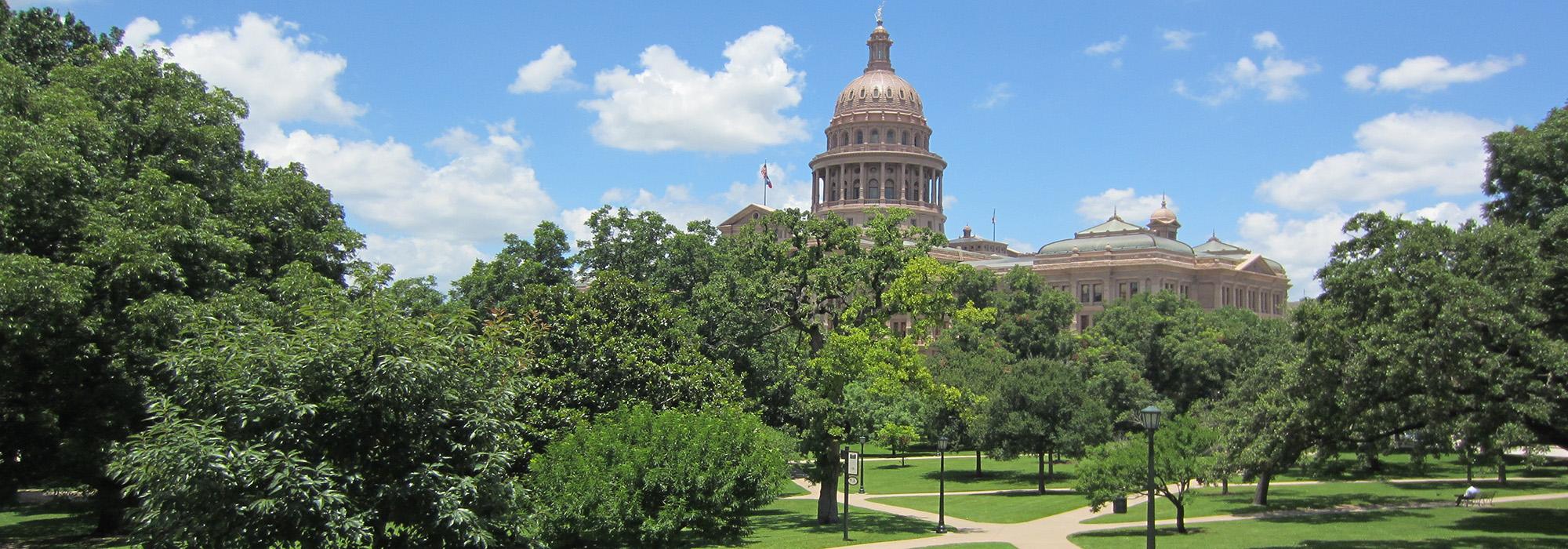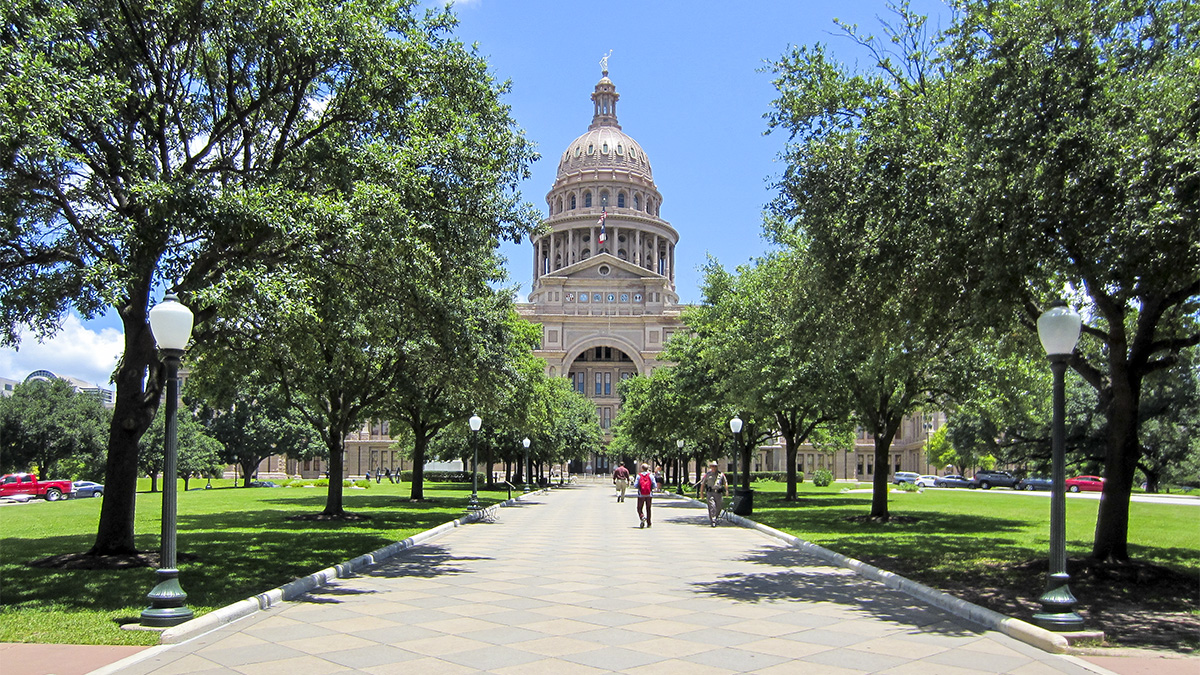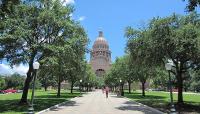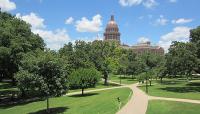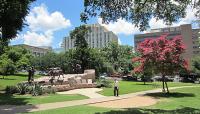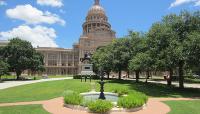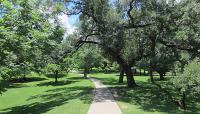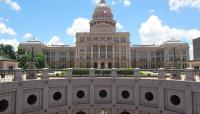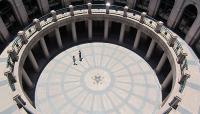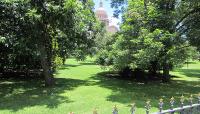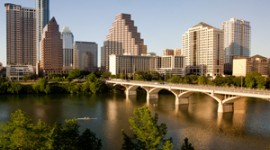Landscape Information
Situated on one of the city’s highest points overlooking the Colorado River, the Capitol occupies the terminus of Congress Avenue, the central north-south axis of Edwin Waller’s 1839 plan for the city. The original structure was destroyed by fire in 1881 and replaced in 1888 with a granite Classical edifice designed by Elijah Myers. At this time civil engineer William Johnson was appointed to redesign the grounds. Johnson’s plan was installed in the 1880s and 1890s, with plantings added by Charles Gilbert in the early twentieth century. Much of Johnson’s plan exists today in large part due to rehabilitation work done by TBG Partners in 1997.
The 22-acre grounds, partially enclosed by an iron fence, comprise sloping lawns, walks, and driveways mirrored across the Great Walk axis extending from Congress Avenue to the Capitol’s south façade. Iron gates and granite posts demarcate the primary entrance and the beginning of the oak-lined Great Walk, surrounded by the Oval Walk, similarly lined with trees and merging with the driveways winding around the building. The rigid geometry and black and white checkboard pattern of these walks differentiates them from the curvilinear pathways that occupy the surrounding lawns beneath the canopy of informally sited trees, breaking from the site’s dominant symmetry. In 1993 an underground complex to the north of the Capitol resulted in the construction of a formal, cross axial hardscape and lawn design that incorporates skylights and views into the subterranean courtyard.
The grounds operate as a setting for civic activity, with twenty monuments and extensive open space. The Capitol was listed in the National Register of Historic Places in 1970 and was designated a National Historic Landmark in 1986.



